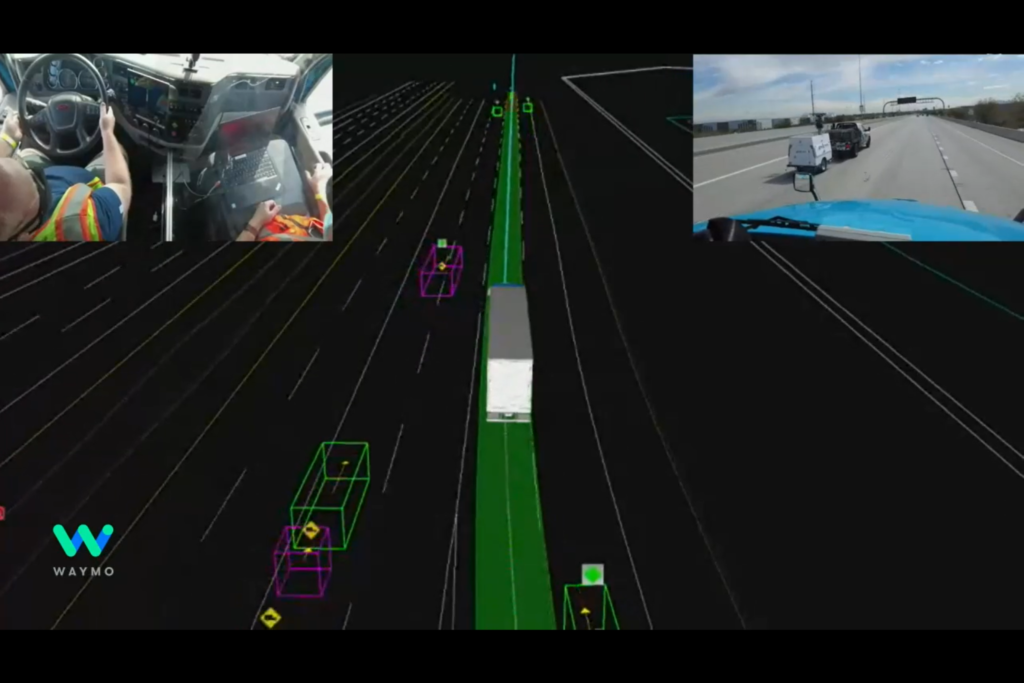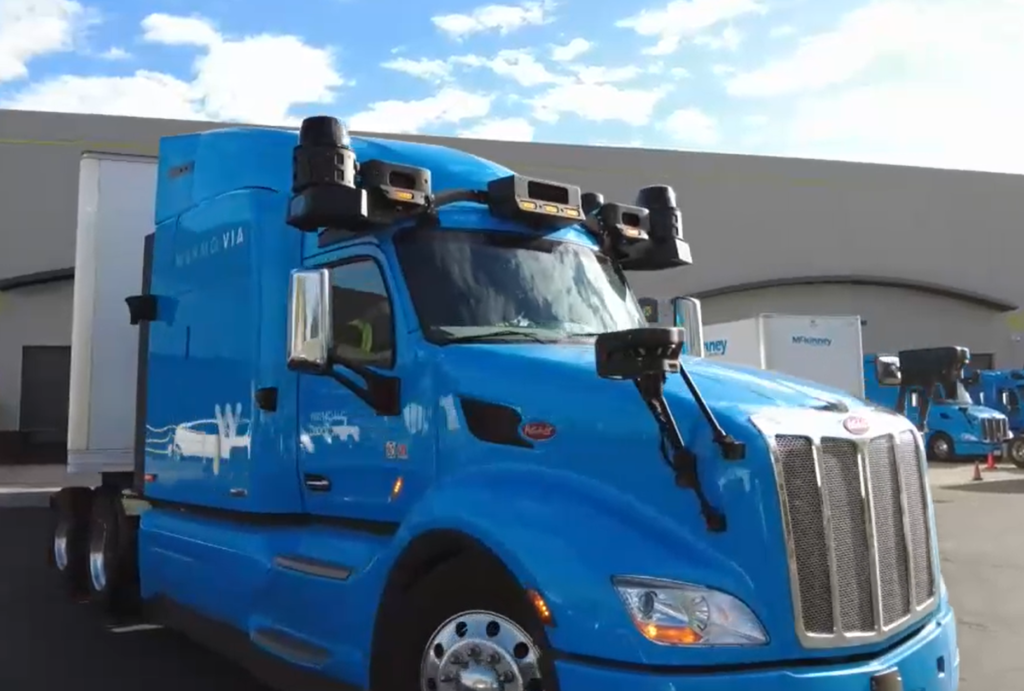Waymo demonstrates autonomous truck tech
It looks like a beautiful day for a drive on the outskirts of Phoenix, Arizona – even if the Waymo Via truck driver is lifting his hands off the Peterbilt’s steering wheel.
That was the point of Wednesday’s online demonstration, though, as Waymo showcased its Waymo Driver system and the underlying sensors that are guiding autonomous trucks being tested in the southwestern U.S.

The business formerly known as Google’s self-driving car project continues to pursue its vision of Level 4 autonomous trucks that will run without driver interactions under defined conditions. And it recently inked a deal with Daimler Trucks North America (DTNA) to support the journey and develop fully redundant safety systems.
Light-duty lessons
While Waymo has been working on autonomous trucks since 2017, it’s clearly drawing on some of its lessons with light-duty vehicles.
The dome on top of the cab — housing GPS, Lidar sensors, and 19 individual cameras — can also found on Waymo’s autonomous Chrysler Pacifica minivans. The latest Lidar sensors mounted on top of the west coast mirrors were first mounted last year on a Jaguar I-Pace.
But there’s undeniably more sensors at play on the trucks, which need to keep their digital eyes further up the road.
Flat blue plates mounted at the upper corners of the windshield feed the radar signals that track distance and speed. Spinning white Lidar sensors below that help to create a view of objects around the truck.
The Lidar sensors on top of the truck identify objects up to three football fields away. Short-range sensors mounted just behind the tractor’s drive axles monitor closer objects like the vehicles in adjacent lanes.
There are even microphones to listen for the sounds of approaching emergency vehicles. Built-in cleaning systems combine ducts, fans, vents, heaters, and air nozzles to ensure the digital view isn’t obstructed.
Updated Waymo Driver
The fifth generation of Waymo Driver already on the road has integrated several updates over previous equipment, which was used for the demonstration. The Lidar resolution has been increased, supporting the 360-degree views around the truck. The sensors now have a 500-meter range, leading to the earlier warnings that make it possible to more gradually decelerate the truck as it approaches a highway ramp.
The underlying artificial intelligence continues to evolve as well, helping to better predict what the drivers in surrounding vehicles will do.
“This version of the Waymo Driver is built for scale, so all of these improvements, and range and reliability also come with a lower cost and are better set to scale up for production,” says Brad Neuman, Waymo’s tech lead, manager – trucking.

The online demonstration offered a view of the system’s thought process as it identified lanes, lights and surrounding vehicles. Green outlines of approaching vehicles turned purple as the threats came closer and deserved more attention. A red bar across the lane ahead showed that the truck recognized a red light.
But there are still human drivers involved in the on-highway demonstrations. The driver closes his hands on the wheel when the truck pulls off the highway. A co-pilot in the passenger seat enters notes on a laptop to help drive further enhancements in the system.
‘Not going to be like a light switch’
It’s part of a journey, and it will take time.
“Autonomous trucking is not going to be like a light switch that suddenly switches,” says Pablo Abad, product manager. The first tests are focusing on areas with favorable weather like Texas, Nevada, Arizona and California.
“As we scale, we will slowly grow that network,” he says.
The advantage of some of the early truck work is that it can focus on structured environments like freeways. Other tests are being conducted on closed tracks.
The systems also need to discover more ways to push into traffic that won’t always accommodate a truck.
“It will drive assertively in a safe way,” Neuman says, referring to the nudging to claim a spot in a lane. But that will involve determining if an adjacent vehicle is slowing down to let the truck find its space. And there’s the ongoing search for the “edge cases” that push the systems to their limits.
The obvious question, then, is when it will come to market.
“We want to do this as it makes sense,” Neuman says. “We want to scale as we’re ready.”
Have your say
This is a moderated forum. Comments will no longer be published unless they are accompanied by a first and last name and a verifiable email address. (Today's Trucking will not publish or share the email address.) Profane language and content deemed to be libelous, racist, or threatening in nature will not be published under any circumstances.
It’s been 2 year’s working with this waymo project.Amazing technology which really avoiding happenings accidents.Real time’auto Validations with the lidar and radar It’s create own labelling of object’s .